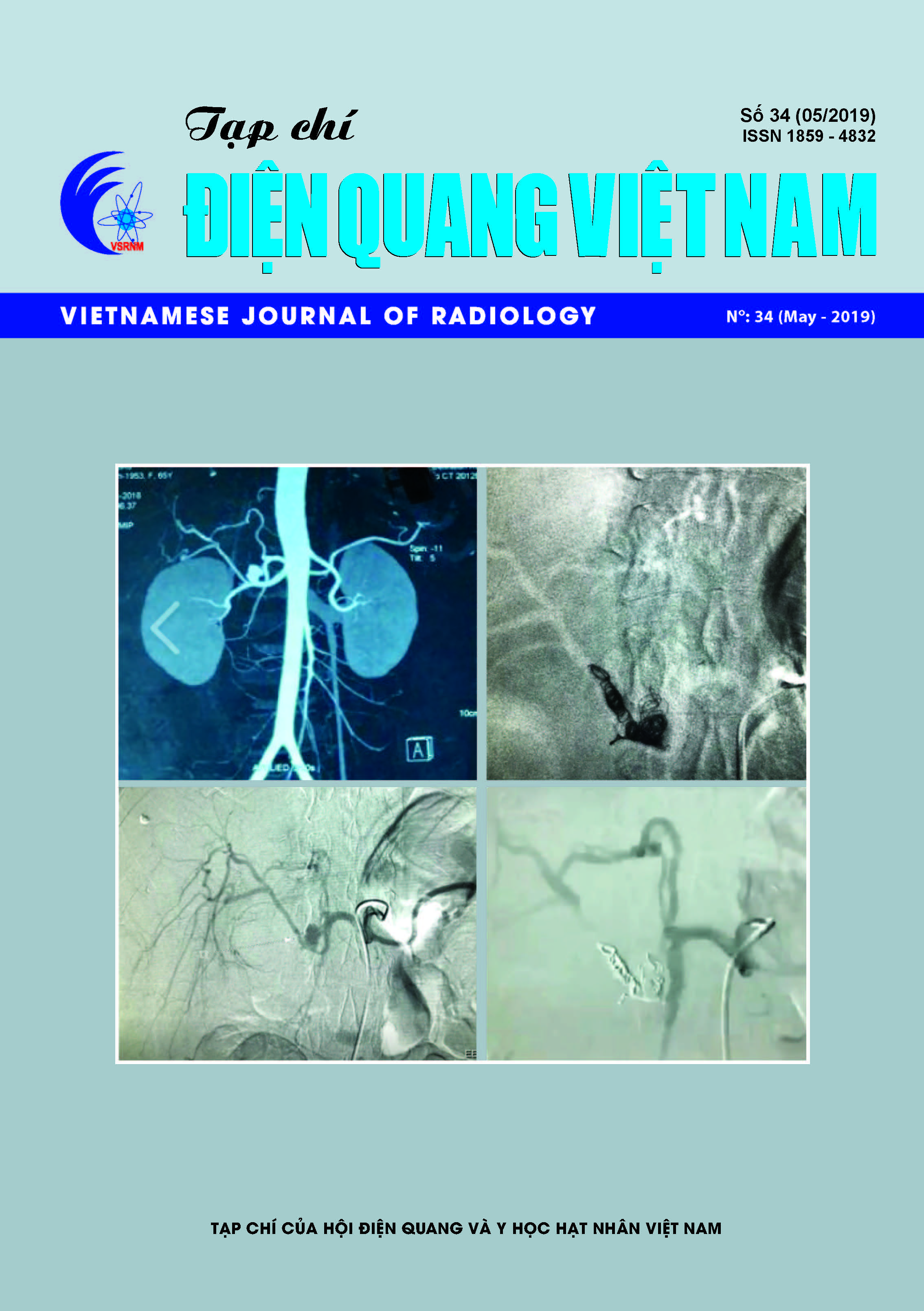CT findings for diagnosis of bowel ischemia and necrosis in closed-loop small-bowel obstruction
Main Article Content
Abstract
SUMMARY
Purpose: The aim of this study was to investigate the imaging features of contrast-enhanced CT (CECT) to diagnosis for bowel ischemiaand necrosis in closed-loop small-bowel obstruction (CL-SBO), and to predict the need for intestinal resection or preservation.
Materials and Methods: Thirty-three patients with CL-SBO confirmed by laparotomy. Based on the surgical findings, these patients were classified into three groups: necrosis group (n = 9), ischemia without necrosis group (n = 12), and no-ischemia group (n = 12). Two blinded radiologists retrospectively reviewed CECT including multiplanar reconstruction images and evaluated 11 CT findings. The sensitivity and specificity of each finding were compared among the three groups, and logistic regression analysis was performed.
Results:Reduced bowel- wall enhancement, reduced enhancement of the mesenteric veins showed high specificities of 92%, 96% and sensitivities of 62% and 78%, respectively, for the prediction of bowel necrosis in CL-SBO. The target sign in the ischemia group were 83% and 76%, respectively, for sensitivities and specificities, compared with 22% and 46% of the necrosis
group. We have included the data in a univariate and multivariate logistic regression analysis, but there is no correlation between imaging features and surgical findings. This can be explained by the interval between CT and laparotomy has altered bowel conditions.
Conclusions: In our prospective patients, reduced enhancements of bowel wall and mesenteric veins were good indicators of bowel necrosis. On the contrary, target sign was a predictor of a viable bowel.
Article Details
Keywords
intestinal obstruction, closed loop, ischemia, necrosis, computed tomography
References
1. Balthazar EJ, Birnbaum BA, Megibow AJ, et al. (1992) Closedloop and strangulating intestinal obstruction: CT signs. Radiology 185:769–775.
2. Kato K, Mizunuma K, Sugiyama M, et al. (2010) Interobserver agreement on the diagnosis of bowel ischemia: assessment usingdynamic computed tomography of small bowel obstruction. Jpn J Radiol 28:727–732.
3. Sheedy SP, Earnest FT, Fletcher JG, Fidler JL, Hoskin TL (2006) CT of small-bowel ischemia associated with obstruction in emergency department patients: diagnostic performance evaluation. Radiology 241:729–736
4. Balthazar EJ (1994) George W. Holmes Lecture. CT of small-bowel obstruction. AJR Am J Roentgenol 162:255–261.
5. Fevang BT, Fevang J, Stangeland L, et al. (2000) Complications and death after surgical treatment of small bowel obstruction: a 35- year institutional experience. Ann Surg 231:529–537.
6. Fager DH, Baer JW (1995) Role of CT in evaluating patients with small-bowel obstruction. Semin Ultrasound CT MR 16:127–140.
7. Burkill GJ, Bell JR, Healy JC (2001) The utility of computedtomography in acute small bowel obstruction. Clin Radiol 56:350–359.
8. Frager D, Baer JW, Medwid SW, Rothpearl A, Bossart P (1996) Detection of intestinal ischemia in patients with acute small-bowel obstruction due to adhesions or hernia: efficacy of CT. AJR Am J Roentgenol 166:67–71.
9. Balthazar EJ, Liebeskind ME, Macari M (1997) Intestinal ischemia in patients in whom small bowel obstruction is suspected: evaluation of accuracy, limitations, and clinical implications of CT in diagnosis. Radiology 205:519–522.
10. Ha HK, Kim JS, Lee MS, et al. (1997) Differentiation of simple and strangulated small-bowel obstructions: usefulness of known CT criteria. Radiology 204:507–512.
11. Nakashima K, Ishimaru H,Fujimoto T, et al (2014) Diagnostic performance of CT findings for bowel ischemia and necrosis in closed-loop small-bowel obstruction.Abdom Imaging 40(5):1097-1103.
12. Furukawa A, Yamasaki M, Furuichi K, et al. (2001) Helical CT in the diagnosis of small bowel obstruction. Radiographics 21:341–355.
13. Makita O, Ikushima I, Matsumoto N, et al. (1999) CT differentiation between necrotic and nonnecrotic small bowel in closed loop and strangulating obstruction. Abdom Imaging 24:120–124.
14. Jancelewicz T, Vu LT, Shawo AE, et al. (2009) Predicting strangulated small bowel obstruction: an old problem revisited. J Gastrointest Surg 13:93–99.
15. Mallo RD, Salem L, Lalani T, Flum DR (2005) Computed tomography diagnosis of ischemia and complete obstruction insmall bowel obstruction: a systematic review. J Gastrointest Surg 9:690–694.
16. Zalcman M, Sy M, Donckier V, Closset J, Gansbeke DV (2000) Helical CT signs in the diagnosis of intestinal ischemia in smallbowel obstruction. AJR Am J Roentgenol 175:1601–1607.
17. Boudiaf M, Soyer P, Terem C, et al. (2001) CT evaluation of small bowel obstruction. Radiographics 21:613–624.
18. Assenza M, Ricci G, Macciucca Mde V, et al. (2007) Comparison among preoperative single-slice CT and multislice CT in simple, closed loop and strangulating bowel obstruction. Hepatogastroenterology 54:2017–2023.
19. Nicolaou S, Kai B, Ho S, Su J, Ahamed K (2005) Imaging of acute small-bowel obstruction. AJR Am J Roentgenol 185:1036–1044.


